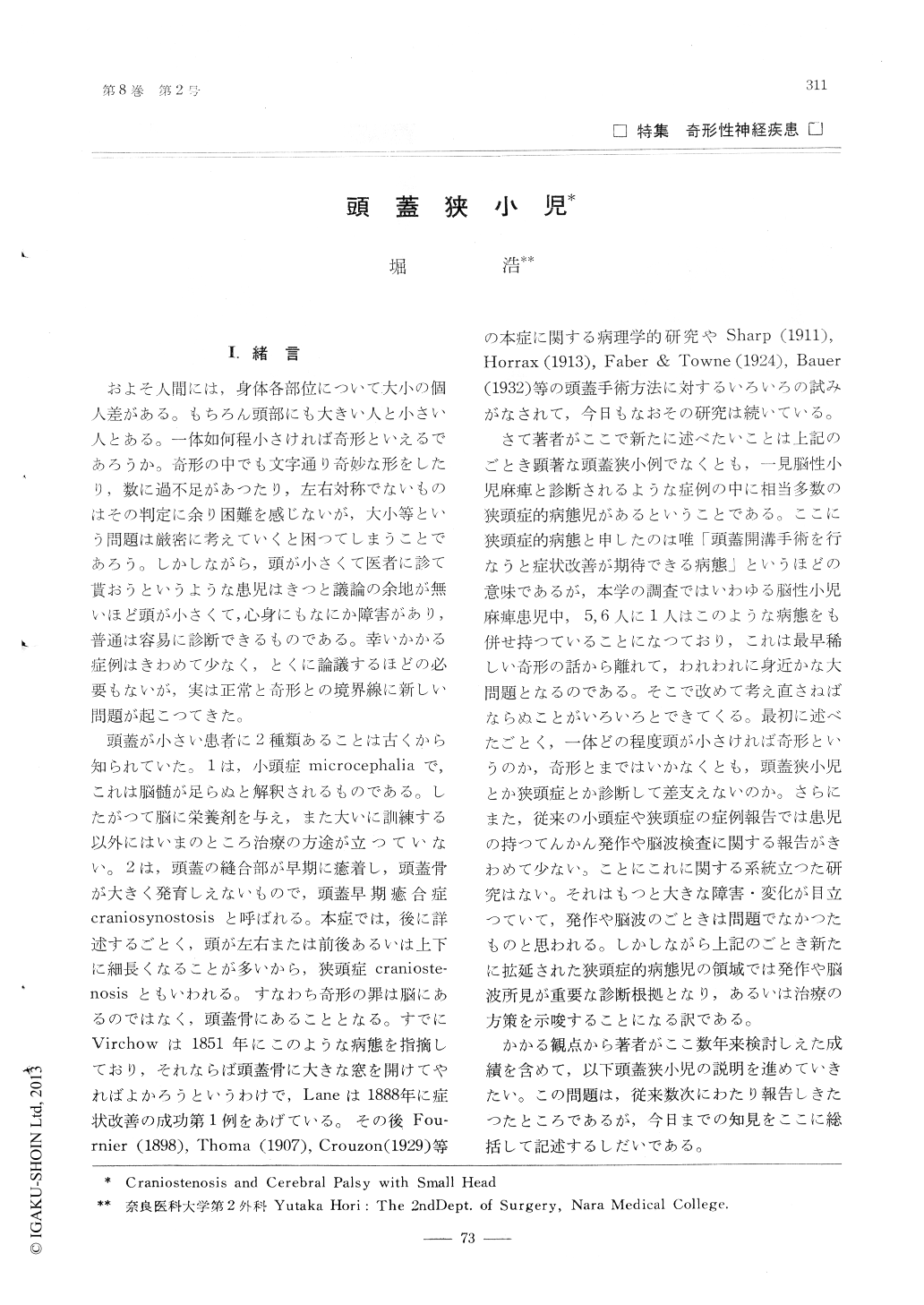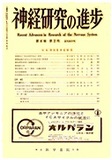Japanese
English
- 有料閲覧
- Abstract 文献概要
- 1ページ目 Look Inside
I.緒言
およそ人間には,身体各部位について大小の個人差がある。もちろん頭部にも大きい人と小さい人とある。一体如何程小さければ奇形といえるであろうか。奇形の中でも文字通り奇妙な形をしたり,数に過不足があつたり,左右対称でないものはその判定に余り困難を感じないが,大小等という問題は厳密に考えていくと困つてしまうことであろう。しかしながら,頭が小さくて医者に診て貰おうというような患児はきつと議論の余地が無いほど頭が小さくて,心身にもなにか障害があり,普通は容易に診断できるものである。幸いかかる症例はきわめて少なく,とくに論議するほどの必要もないが,実は正常と奇形との境界線に新しい問題が起こつてきた。
頭蓋が小さい患者に2種類あることは古くから知られていた。1は,小頭症microcephaliaで,これは脳髄が足らぬと解釈されるものである。したがつて脳に栄養剤を与え,また大いに訓練する以外にはいまのところ治療の方途が立つていない。2は,頭蓋の縫合部が早期に癒着し,頭蓋骨が大きく発育しえないもので,頭蓋早期癒合症craniosynostosisと呼ばれる。本症では,後に詳述するごとく,頭が左右または前後あるいは上下に細長くなることが多いから,狭頭症craniostenosisともいわれる。
It has been known that there may be the cases of craniostenosis and microcephalia in the infants with abnormally small head. The craniostenosis is one of the uncommon congenital anomalies of head and its symptoms may be improved by craniotomy. On the other hand, the author found the important fact that the craniostenotic pathogenesis could exist in the patients who might be diagnosed as so called cerebral palsy, and that they might be improved their symptoms by craniotomy. To interpret the above mentioned findings, the author supposes the pathological condition "secondary craniostenosis", which differs from the primary craniostenosis. Dekaban (1959) described the acquired or second, ary microcephalia. When the ability of brain development regain in these patients, the secondary craniostenosis may be produced. Therefore, in the craniostenotic conditions of our cases, there are the primary (in slight degree) and the secondary craniostenosis.
1) In a follow-up study of craniotomy in our 64 infants with slightly small head, 19 infants are markedly effective ; 37 infants are resultful and 8 infants are no effect.
2) The cases with craniostenotic pathogenesis are twenty per cent of cerebral palsied patients in our clinic.
3) In most cases the differentiation between eraniostenotic pathogenesis and microcephalia may he possible by using electroencephalography.
4) The symptoms responscd markedly by craniotomy are spasm, convulsion and psycho-motor retardation.

Copyright © 1964, Igaku-Shoin Ltd. All rights reserved.


